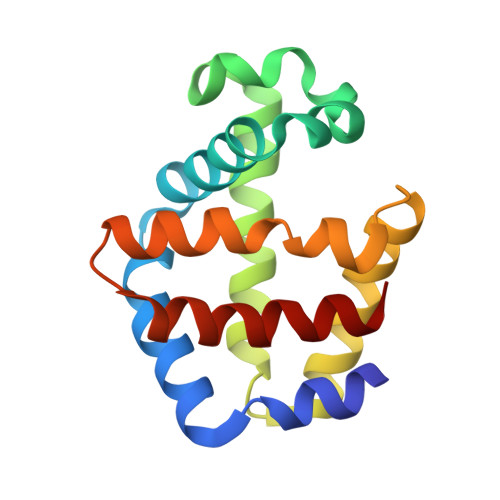Restricting the Ligand-Linked Heme Movement in Scapharca Dimeric Hemoglobin Reveals Tight Coupling between Distal and Proximal Contributions to Cooperativity.
Knapp, J.E., Gibson, Q.H., Cushing, L., Royer Jr., W.E.(2001) Biochemistry 40: 14795-14805
- PubMed: 11732898
- DOI: https://doi.org/10.1021/bi011071t
- Primary Citation of Related Structures:
1JWN, 1JZK, 1JZL, 1JZM - PubMed Abstract:
Cooperative ligand binding in the dimeric hemoglobin from the blood clam Scapharca inaequivalvis results primarily from tertiary, rather than quaternary, structural changes. Ligand binding is coupled with conformational changes of key residues, including Phe 97, which is extruded from the proximal heme pocket, and the heme group, which moves deeper into the heme pocket. We have tested the role of the heme movement in cooperative function by mutating Ile 114, at the base of the heme pocket. Replacement of this residue with a Met did not disturb the hemoglobin structure or significantly alter equilibrium ligand binding properties. In contrast, substitution with a Phe at position 114 inhibits the ligand-linked movement of the heme group, and substantially reduces oxygen affinity and cooperativity. As the extent of heme movement to the normal position of the ligated state is diminished, Phe 97 is inhibited from its movement into the interface upon ligand binding. These results indicate a tight coupling between these two key cooperative transitions and suggest that the heme movement may be an obligatory trigger for expulsion of Phe 97 from the heme pocket.
Organizational Affiliation:
Department of Biochemistry and Molecular Pharmacology, University of Massachusetts Medical School, Worcester, Massachusetts 01655, USA.
















